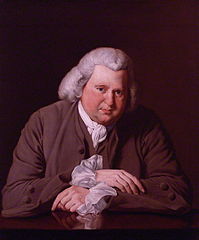
In the 1974 film Young Frankenstein, directed by Mel Brooks, there is, as I recently realized, a surprisingly erudite joke. In a scene early in the film, Dr. Frankenstein—who, in order to distance himself from a notorious grandfather, pronounces his surname “Fronkenshteen”—is talking with a student. “Isn’t it true,” he is asked, “that Darwin preserved a piece of vermicelli in a glass case until, by some extraordinary means, it actually began to move with voluntary motion?” Frankenstein (played by the late Gene Wilder) replies, “Are you speaking of the worm or the spaghetti?” and then adds, “Yes, I did read something of that incident when I was a student, but you have to remember that a worm … with very few exceptions … is not a human being.” No argument there, although it would be interesting to hear about the exceptions!
But wait: the worm or the spaghetti? What kind of joke is that supposed to be? It’s not, or not only, a pun on “worm”/“verm,” which would be rather lame. It’s a reference to the novel on which Young Frankenstein is riffing: Mary Wollstonecraft Shelley’s Frankenstein, or the Modern Prometheus. And it is, moreover, a reference to a specific edition of it. Frankenstein was published first in 1818, but in 1831 it was selected for inclusion in a series of Standard Novels, for which Shelley contributed a new introduction. There she describes the origin of the novel in
Many and long were the conversations between Lord Byron and [Percy Bysshe] Shelley, to which I was a devout but nearly silent listener. During one of these, various philosophical doctrines were discussed, and among others the nature of the principle of life, and whether there was any probability of its ever being discovered and communicated. They talked of the experiments of Dr. Darwin, (I speak not of what the Doctor really did, or said that he did, but, as more to my purpose, of what was then spoken of as having been done by him,) who preserved a piece of vermicelli in a glass case, till by some extraordinary means it began to move with voluntary motion. Not thus, after all, would life be given. Perhaps a corpse would be re-animated; galvanism had given token of such things: perhaps the component parts of a creature might be manufactured, brought together, and endued with vital warmth.
Of course, in 1816, Charles Darwin was seven years old. Moreover, he was never a doctor anyhow, having found medical school at the
Fortunately, if you look at the additional notes to Erasmus Darwin’s The Temple of Nature (1803)—he couldn’t resist the impulse to annotate his poetry—you’ll find a section on “Spontaneous Vitality of Microscopic Animals,” explaining the couplet “Hence without parent by spontaneous birth / Rise the first specks of animated earth” with about 3500 words of text. In particular, he writes:
Some of the microscopic animals are said to remain dead for many days or weeks, when the fluid in which they existed is dried up, and quickly to recover life and motion by the fresh addition of water and warmth. … Thus the vorticella or wheel animal, which is found in rain water that has stood some days in leaden gutters, or in hollows of lead on the taps of houses, or in the slime or sediment left by such water, though it discovers no sign of life except when in the water, yet it is capable of continuing alive for many months though kept in a dry state. In this state it is of a globulous shape, exceeds not the bigness of a grain of sand, and no signs of life appear; but being put into water, in the space of half an hour a languid motion begins, the globule turns itself about, lengthens itself by slow degrees, assumes the form of a lively maggot, and most commonly in a few minutes afterwards puts out its wheels, swimming vigorously through the water as if in search of food; or else, fixing itself by the tail, works the wheels in such a manner as to bring its food to its mouth … (emphasis added)
Ah: vorticella, not vermicelli! Shelley simply goofed. Patricia Fara in her Erasmus Darwin (2012) tries to excuse her: “Presumably she was referring not to a type of pasta, but to the word’s literal meaning—‘small worms’ (that might sound an irrelevant detail, but she’s often mocked for getting it wrong).” But ciliates such as Vorticella and (let’s say) annelids such as earthworms are quite distant cousins indeed, so mock on if you like.
A writer for the Institute for Creation Research amusingly managed to miss the point in a 1999 article with the ambitious title “Evolution is Biologically Impossible.” Quoting part of the introduction from the 1831 edition of Frankenstein, the ICR author added, “All theories need testing, so I bought some vermicelli pasta, kept it in salt water in a test tube for a month, and never saw any motion, voluntary or otherwise. I also used a tesla coil to conduct ‘galvanism’ [he’s echoing Shelley’s term] through it to a fluorescent bulb. The bulb lit and the vermicelli eventually began to cook, but never came to life.” Relying on a non-scientist’s fifteen-year-old recollection of a conversation among non-scientists about the scientific work of a savant from the eighteenth century in order to attack evolution toward the end of the twentieth century: really?

